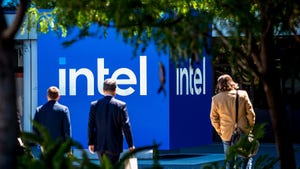Want Cheaper Google Cloud? Pipe Your Data into GCP via InternetWant Cheaper Google Cloud? Pipe Your Data into GCP via Internet
August 24, 2017

If your application running in Google’s cloud can tolerate lower performance and reliability in exchange for a significant discount on using the infrastructure, you will soon be able to use a lower-cost network tier.
Tiered cloud connectivity service is coming to the Google Cloud Platform, offering savings for uses where throughput and latency aren’t crucial, while use cases where those factors are important can leverage the same network Google uses to provide services like Gmail and YouTube. That’s the gist of a new program, Network Service Tiers, that GCP announced this week. The two tiers are: Premium and Standard. At present, the service is in Alpha, so it’s not yet ready for prime time.
If you’re already using GCP, you’re running on Premium Tier, which offers peak performance by taking advantage of the giant’s private global fiber network with over 100 access points, or points of presence (POPs). In this tier, all traffic enters and leaves Google’s network at the POP closest to the end user. This means data travels over the public internet for the shortest possible distance, maximizing performance.
See also: Google Brings Tech That Made YouTube Faster to Its Cloud Services
“Over the last 18 years, we built the world’s largest network, which by some accounts delivers 25-30 percent of all internet traffic,” Urs Hölzle, Google’s senior vice president of technical infrastructure, said in a statement. “You enjoy the same infrastructure with Premium Tier. But for some use cases, you may prefer a cheaper, lower-performance alternative. With Network Service Tiers, you can choose the network that’s right for you, for each application.”
Standard Tier cloud connectivity will be cheaper because most data transit will be handled by the public internet, with traffic entering and leaving Google’s network at the customer’s GCP region. In other words, if your user is located in New York but your app is served from the Google cloud data center in Northern Virginia, the user’s requests will go through multiple ISPs to Northern Virginia instead of entering Google’s network at the company’s POP in New York.
See also: Google Reveals Its Edge Data Center SDN
Google:
“Performance, availability and redundancy characteristics of Standard Tier depend on the transit provider(s) carrying your traffic. Your traffic may experience congestion or outages more frequently relative to Premium Tier, but at a level comparable to other major public clouds.”
Some network services will also be lower in Standard Tier, such as GCP’s Cloud Load Balancing, because they will be confined to the customer’s region.
Premium cloud connectivity users, Google pointed out, should experience not only higher performance, but more dependable service, as the end-to-end transit will take advantage of the redundancy designed into the GCP infrastructure.
“There are at least three independent paths between any two locations on the Google network, helping ensure that traffic continues to flow between these two locations even in the event of a disruption. As a result, with Premium Tier, your traffic is unaffected by a single fiber cut. In many situations, traffic can flow to and from your application without interruption even with two simultaneous fiber cuts.”
The GCP team been working overtime to build the service’s enterprise customer base. The company has poured billions into building it’s cloud infrastructure into what might be the world’s largest, as well as increasing its capabilities, but remains far behind its biggest rivals as a public cloud provider, commanding only 3 percent of the market, compared to top dog Amazon Web Services’ 41.5 percent and Microsoft Azure’s 29.4 percent. Offering a budget tier with a 24-33 percent reduction in price might help attract new users to the fold.
See also: Google Says It’s Closing More Big Enterprise Cloud Deals than Ever
Learn about the way Google’s global data center network is built in our Google Data Center FAQ
It also might help it get the word out about performance advantages of premium cloud connectivity when compared with its competitors, which would be a given if the claim that its lower performing Standard Tier will offer performance stats similar to AWS and Azure is correct. It’s already working in that direction, by citing performance stats supplied by internet performance monitoring company Cedexis showing Premium throughput to be 1.7x times that of Standard.
Again, Network Service Tiers is currently in Alpha stage, with no indication of when it will be made generally available. Until then, pricing for GCP remains unchanged. When the service comes out of beta, Google says that Standard Tier will be “less expensive than internet egress options offered by other major public cloud providers” and that inbound traffic will remain free for both tiers. Premium Tier pricing will then move from being destination-based to being based on both the traffic’s source and destination “since the cost of network traffic varies with the distance your traffic travels over Google’s network.”
Pricing for both tiers is already available online. Google is also encouraging users to give Network Service Tiers a spin by signing up for the alpha service.
Read more about:
Google AlphabetAbout the Author
You May Also Like







